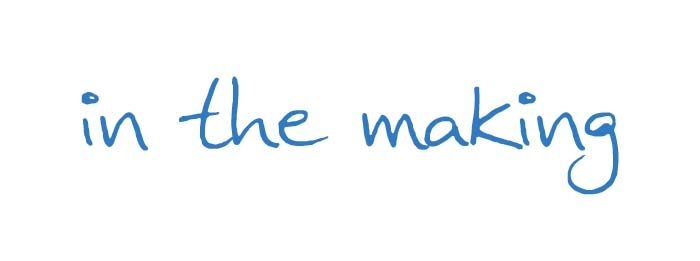
Lead books, Installation in Berlin, German
I have been to a documentary film about the German artist Anselm Kiefer. He has lived for nearly 20 years in Barjac, southern France, and worked in a huge space, a derelict silk factory.
The film silently journeys through this space, the excavations under the building, the outside area and installations, and the huge painting studio. There is then a sequence of Kiefer working with his team of assistants, in the studio and the grounds.
His paintings are on a massive scale, perhaps 6 x 10 metres or more, and are moved about on specially constructed free-standing trolleys. No holds are barred, the canvasses, already deeply scarred and textured, are laid horizontal, covered by roughly thrown paint or plaster or glue, followed by a layer of soil or dust. The canvas is then replaced to replaced to vertical and shaken hard "once". Some of this new texture remains.
 Gallery in Berlin, Germany, showing a sculpture and painting by Kiefer in the background.
Gallery in Berlin, Germany, showing a sculpture and painting by Kiefer in the background.Kiefer is also a sculptor, working with different scales and materials. He makes relatively small wooden objects such as boats or submarines, which are moved by crane to sit against the canvasses. He has a fascination with lead, which is apparently quite instable on a molecular level and changes shape over time, for example in old cathedral roofs. Kiefer makes huge lead books, actual books with pages that turn. Sometimes these are incorporated into the paintings, sometimes they are an independent sculpture.
He also uses the earth as a material. In the film large earthmoving machinery scoops masses of soil or subsoil from one location to another, sometimes covered with liquid lead.
He has an apocalyptic vision, hence the title of this film, and is fascinated by ruins and destruction, and fragments of once great and strong buildings. One exterior installation is inside an enormous glasshouse. It consists of twisted steel girders and huge crumbling and broken chunks of concrete.

He also makes precarious almost toppling towers (as in illustration above), which have a bleak rawness and desolate poignancy.
There is an interview in the film. This takes place in Kiefer's library, and the artist talks about his ideas, his fascination with the Bible (from which the title is taken), and the figure of Lilith, a biblical figure who inhabited ruins. He also disparages the mind as a minor and small area of consciousness, claiming that the whole body, at a cellular level, is far more dominant than we know. Blood has almost the same composition of sea water, this reflects our origin and explains our deep longing for water and the sea.
He says that boredom is a place where we can know ourselves. Children experience boredom, he says, and this is a blessing for them, but as adults we try to escape from it. He quotes an essay by Heidegger on this subject.
Kiefer is strongly influenced by Joseph Beuys, with whom he studied, and by the writings of the Jewish poet, Celan. He is deeply affected by twentieth German history, and most of his work reflects this.
I had no idea of the range of his work until I saw this film. I was inspired by the physical energy and scale with which he works, and by the power of his subject matter. He is the same generation as myself, perhaps some of us are haunted by history.










